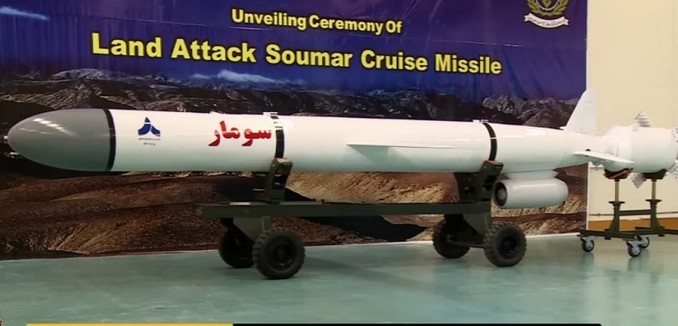Iran’s unveiling of its new Soumar land-to-land cruise missiles on Sunday has raised questions about the intentions of the Islamic Republic’s missile development program.
The Times of Israel reports:
In a development significant both for its timing and its content, Iran unveiled on Sunday a new cruise missile that it claimed would extend the Islamic Republic’s range by 25 percent, placing locales as distant as Budapest, Warsaw, and Athens within striking distance.
The Iranian revelation, complete with videos of a missile launch, come amid Tehran’s negotiations with the six world powers over its nuclear program and infrastructure.
While the Times observed that the payload of the Soumar is not enough to carry a nuclear warhead, its range raises questions about its intent.
Tal Inbar, the head of space research at the Fisher Institute for Air and Space Strategic Studies, called the new cruise missile and the increased range it represents [2,500 kilometers] “a dramatic shift.”
He said in an email statement that the Soumar, like other cruise missiles, flies at a low altitude, making it hard for radar to detect.
Iran’s leadership has often claimed that its missile program should not be a factor in negotiations over its nuclear program because the missiles are of “a completely defensive nature,” but the range of the Soumar threatens a number of European capitals, despite Russia’s insistence that Iran’s missile program “threaten neither Europe nor the U.S.”
One of the International Atomic Energy Agency’s twelve unanswered questions about Iran’s program, highlighted by The New York Times yesterday, was about the re-entry system built aboard a Shahab-3 missile, which would prevent its payload—possibly a nuclear bomb—from burning up when it re-entered the atmosphere.
[Photo: PressTV News Videos / YouTube ]




